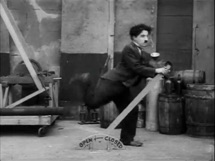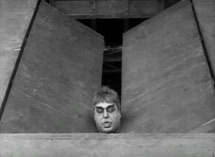Behind the Screen next previous
Behind the Screen Clippings 48/93
Motion Picture News, New York, November 18, 1916.
Behind the Screen Scenes
-
B.S. Moss‘ Broadway Theatre, exterior by day, marquee
Keith Komedy Karnival, New York – Lobby display
used by the B. S. Moss Broadway theatre, New York to put over
an all comedy bill, Snookums, the Universal infant actor,
Harold Lloyd and Charley Chaplin being billed as „Komedy Kings.“
(...) Exhibitors Herald and
Moving Picture World, Feb. 18, 1928
„Bach fugues and Chaplin comedies were
never intended to meet“
Editorial content. „Music and the Picture
The Organ as a Proper Aid in Correct Showing of Picture
J. Van Cleft Cooper, Organist of Broadway Theatre,
Writes Instructively and Entertainingly on the Value and
Relationship of the Organ and the Picture – The
Offensiveness of Being ,Churchy‘ and the Proper Viewpoint
of the Organist Clearly Set Forth and Explained
,WHAT shall I play for the picture? This is the question
which confronts every organist who sits down at a
console in a theatre. And the motto, ,Fit the music to the
picture,‘ is no great help. It is like saying to a man
who wants to acquire strength, ,Be strong.‘ In fact each organist
must rely largely upon his own sense of the dramatic
rather than upon instructions from others, be they never
so competent.
The music may be either descriptive or merely
an accompaniment to the action. If it be
descriptive then it should reflect the atmosphere of the action
– serious or gay, sombre or cheerful, humorous
or tragic. These various moods must be determined by the
organist and he must be quick to appreciate a change
of mood and to adapt his music to it. If he can classify his
repertoire according to the atmosphere it can suggest
or the mood each piece can typify he will find it a great help.
Certain portions of most pictures call for definite,
positive characterization and in these spots it is often the case
that the action is so rapid and the moods so varying
that it is almost impossible to find any set piece of music that
will do it justice. Here is where the peculiar value
of the organ to the motion picture theatre is plainly manifest,
for the organist can at points like these improvise
music that will follow the action very closely.
Also at points like these the organist must depend on his
own dramatic sense and woe be the organist who
has none. Such an organist will play – as one I heard did
play – Schumann‘s Träumerei and Romanze
on a slapstick comedy and he may even follow it up, as this
one did, with portions of Mendelssohn‘s Wedding
March! Bach fugues and Chaplin comedies were never
intended to meet.“ (...)
Redaktioneller Inhalt
Behind the Screen next previous






